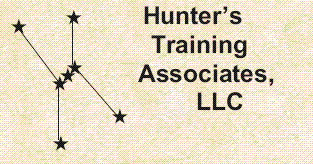
Developing Dialog Manager Applications in z/OS - Topical Outline
Day One
Introduction to Dialog Manager
Dialog components
Dialog variables
Panel definitions
Data set requirements
Invoking Dialog Manager services from a CLIST or Exec
Invoking Dialog Manager services from a program
Dialog Testing
Computer Exercise Setting up for Dialog Manager
Panel Definitions
The LIBDEF Service
User libraries
Defining panels
Headers and sections in a panel definition
Panel design
Attribute characters
Panel definition - the )BODY section
The )END section
Panel layout concerns
DISPLAY services
Computer Exercise Defining Panels
Dialog Variables and pools
Applications
Variable Pools
Function pools for execs and CLISTs
The shared pool
The application profile pool
Z variables
The system profile pool
Variable pools relationships
System variables
System Symbols
Variable services: VGET, VPUT, VERASE
Brief TSO Review
Brief REXX Review
Brief CLIST Review
Common notes
Running Dialogs from DSLIST
Computer Exercise The Case Study, Backup and Restore Functions
Day Two
Panel processing and messages
Test and Trace modes
Snapshot - quick review
Panel processing statements
Panel processing built-in functions
Control variables
Messages
Message format
Message processing
Message services
Computer Exercise The Case Study: Display an Individual Record
Basic Library Access services
Placeholder variables
DATAIDs
LMINIT
LMOPEN
LMGET
LMPUT
LMCLOSE
LMFREE
Computer Exercise The Case Study, Part 2, Second Stage: File I/O
Pop-up windows
Windows
Primary and active windows
ADDPOP service
Window frames
Defining panels with windows
Window fit
REMPOP service
Interacting with pop-ups
Messages and windows
Computer Exercise The Case Study, Third Stage: Windows
Scrollable fields
Design issues
Implementing scrollable fields
The )FIELD section
Scrollable Fields: an example
Day Three
Menus and Debugging
Command Processing
Jump function processing
Menus
The SELECT service
Syntax for TRANS and TRUNC in a menu
Handling lower level requests
Primary option menus
Master application menus
Menus, panels, and SELECT
Dialog Test tracing services
Computer Exercise The Case Study, Add Menu Hierarchy
Some new services and tutorials
Edit Models
The CONTROL service
Browse, Edit, and View services
Browse, Edit, and View: working with z/OS UNIX files
Edit recovery interface
Tutorials
Computer Exercise The Case Study: Add Tutorials and Browse Feature
ISPF Tables
Table types
Tables and keys
Defining tables - TBCREATE
Row variables
Extension variables
Working with tables
Working with rows
Computer Exercise The Case Study: Add A Table
Day Four
Table Display services
Panels for table displays
The )ATTR section for table display panels
The )BODY section for table display panels
The )MODEL section for table display panels
The TBDISPL service
Processing selected rows
Table display variables
TBSARG and TBSCAN
Dialog Test and tables
Computer Exercise The Case Study: Processing Selected Rows
The ISPF Table Utility
Introduction to the Table Utility
Table List Formats
Editing and Browsing Tables
Re-Structuring The Table Display
Sorting Tables
Exporting and Importing Tables
Table Utility Options
Computer Exercise: Using the Table Utility
File Tailoring services
The file tailoring process
Skeletons
File tailoring services - FTOPEN, FTINCL, FTCLOSE, FTERASE
Computer Exercise The Case Study: File Tailoring
More Library Access Services
LMCOPY, LMMOVE, LMPRINT, LMRENAME, LMERASE
Library access services to work with true libraries:
LMCOMP, LMMFIND, LMMREN, LMMREP, LMMADD, LMMDEL, LMMSTATS, LMMLIST, LMMDISP, MEMLIST
Library access services to work with lists of data sets:
LMDINIT, LMDFREE, LMDLIST, LMDDISP
DIRLIST - Display a z/OS UNIX Directory List
Day Five
Miscellaneous Topics
Panel preprocessing
Dialog Test: the DTEST command
Obtaining data set information: QLIBDEF, QBASELIB, DSINFO
Dialog Manager and commands
Command tables
Creating command tables
Using command tables
Computer Exercise Create a User Command
Introduction to Common User Access (CUA)
The CUA standard
CUA panel formats
Using Action Bars
Working with pull-down menus
Creating action bars using panel language
Computer Exercise Adding Action Bars
Keylists
Keylists
Dialog Tag Language (DTL)
Defining keylists
The ISPDTLC utility
Using keylists
Computer Exercise Creating a Keylist
Final Topics
Using Compiled Languages for Dialogs
Tradeoffs
Installing an ISPF Application
Using ISPSTART
Read-Only Profile Pool Extensions
Optional Exercise: The Case Study: Table to Sequential File [and Back]
A810 / 5 Days
These Materials © Copyright 2012 by Steven H. Comstock
Materials version: V6.x
Course Description
Course Objectives
TSO / ISPF / REXX / CLIST curriculum
Home page
This page last updated: 30 July, 2014
Copyright © 2014 by Hunter's Training Associates, LLC